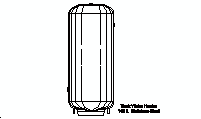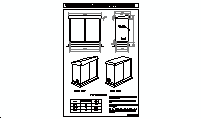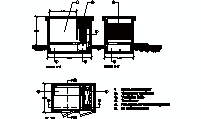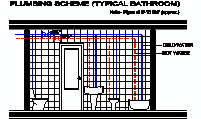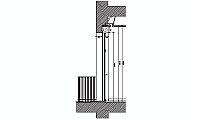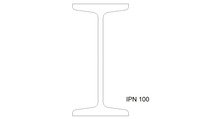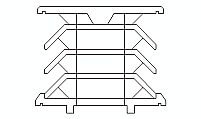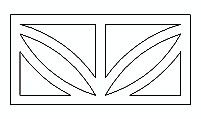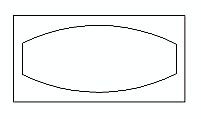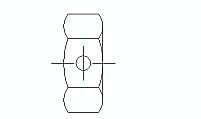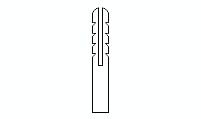CAD Blocks categories
 3D models
3D models home furniture
home furniture sanitary ware - bathrooms
sanitary ware - bathrooms professional equipment
professional equipment doors and windows
doors and windows people and animals
people and animals plants and trees
plants and trees vehicles - transports
vehicles - transports architectural details
architectural details mechanical - electrical
mechanical - electrical urban planning - civil works
urban planning - civil works safety health construction
safety health construction accessible design
accessible design drawing sheet
drawing sheet signals
signals construction machinery
construction machinery accessories and objects
accessories and objects maps and street maps
maps and street maps
Radiator Heating Panel: Horizontal Flat-Panel Design

size: 12 kb
category: electrical, mechanical and HVAC
related categories:
description: horizontal flat-panel radiator heating panel with a sleek, modular design for efficient heat distribution, viewed from the top.
file extension: .dwg CAD - AutoCAD software
Features, Dimensions, and Standards of Radiator Heating Panels
Technical Description of the Radiator Heating Panel
The horizontal single flat-panel radiator depicted in the top view features a sleek, modular design ideal for modern residential and commercial heating systems. The radiator consists of parallel flat-panel elements, maximizing surface area for efficient heat transfer. It includes precision connections at both ends for seamless integration into closed-loop heating systems.
At one end, the radiator is equipped with a valve and thermostatic control, allowing users to adjust heat output according to room requirements. This design combines practicality with aesthetics, making it suitable for contemporary interiors. The lightweight construction further simplifies installation and maintenance.
Dimensions and Heat Output
The radiator measures approximately 120 cm in length, 30 cm in height, and 8 cm in depth (roughly 47 in x 12 in x 3 in). These compact dimensions make it ideal for installation in spaces with limited wall area while maintaining sufficient heat output for medium-sized rooms.
With a heat output range of approximately 4000 to 6000 BTUs, depending on water flow temperature and room insulation, this radiator is highly efficient. Additional size variations are available, ranging from 80 cm to 180 cm in length, to accommodate different heating requirements.
Standards and Installation Guidelines
- What materials are used for the radiator?
- The radiator is typically made from steel, which provides excellent heat conductivity and durability.
- What installation standards apply?
- The radiator complies with EN 442 for heat output and safety, and is compatible with ANSI/ASHRAE 103 for system integration in the U.S.
- What are the connection types?
- Standard threaded connections (1/2-inch) are used for compatibility with common pipe systems.
- What accessories are required?
- Valves, wall brackets, and pipe insulation are essential for proper installation and efficient operation.
- Can this radiator be used with underfloor heating systems?
- Yes, it can act as a supplementary heating source in systems with underfloor heating.
Benefits of Horizontal Flat-Panel Radiators
The horizontal flat-panel radiator offers several advantages over traditional radiators. Its streamlined design blends seamlessly with modern interiors, and the flat-panel construction maximizes heat transfer efficiency while minimizing energy consumption.
Additionally, these radiators are lightweight and easy to install, reducing labor costs. They provide uniform heat distribution, ensuring consistent room temperatures, and are compatible with a wide range of heating systems, including renewable energy sources like solar thermal systems.
Evolution and Global Standards for Radiators
Radiators have evolved significantly over the years, from cast iron designs to modern, lightweight flat-panel constructions. Innovations in materials, such as powder-coated steel, have enhanced durability and heat transfer efficiency while maintaining sleek aesthetics.
Global standards like EN 442 in Europe and CSA B140.12 in Canada ensure compatibility and efficiency across various markets. Flat-panel radiators are now widely adopted worldwide due to their space-saving designs and adaptability to renewable energy systems, such as heat pumps and solar thermal setups.






